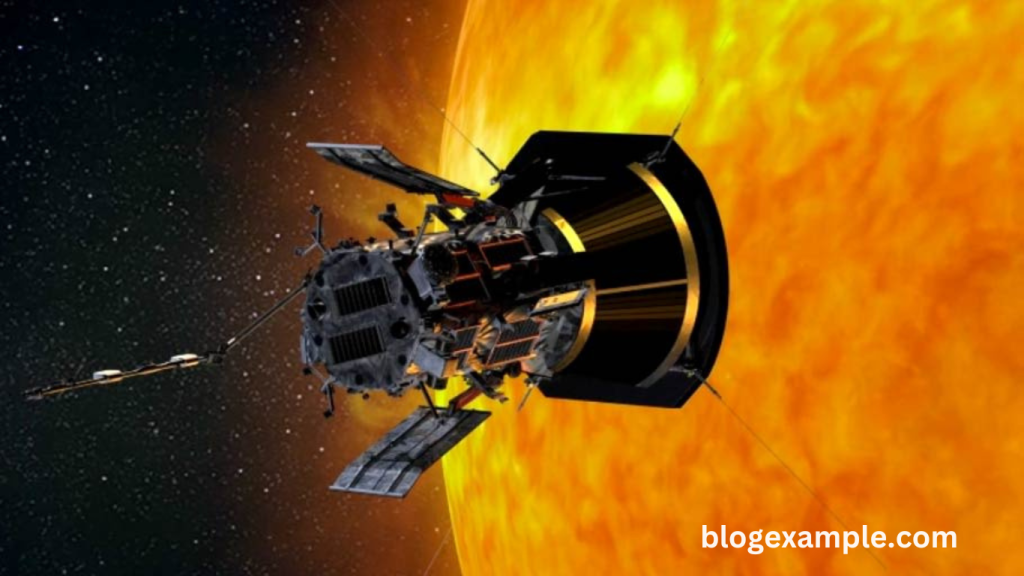A remarkable feat in space science has unfolded as a NASA spacecraft blazes a trail closer to the sun than any human-made object before. This journey is not just a victory for engineers and scientists but a turning point in understanding our star more intimately than ever imagined.
The Parker Solar Probe’s Bold Mission
At the heart of this mission lies the Parker Solar Probe, launched by NASA with a clear objective: to dive into the sun’s outer atmosphere, the corona. Its design allows it to withstand blistering temperatures and intense radiation. It’s not just about how close it gets—it’s about the treasure trove of data it collects as it flies through regions that were once far beyond reach.
Designing for Extreme Conditions
Reaching the sun demands much more than speed—it requires groundbreaking innovation. The spacecraft is protected by a carbon-composite heat shield capable of withstanding temperatures approaching 2,500 degrees Fahrenheit. Inside, sensitive instruments remain cool and operational, gathering measurements that were once considered impossible to obtain.
Read More : Meta faces the FTC as blockbuster antitrust trial kicks off
Speeding Through Space at Record-Breaking Velocity
What makes this mission historic is not just proximity but pace. The probe is traveling at speeds topping 430,000 miles per hour. At this rate, it could zip from New York to Tokyo in under a minute. This speed allows it to keep pace with the powerful gravitational pull of the sun while conducting cutting-edge research.
What Scientists Hope to Learn
Getting close to the sun allows researchers to unlock long-standing mysteries. One primary goal is to understand why the sun’s corona is vastly hotter than its surface. Another is to examine how solar winds form and accelerate. Answers to these questions may reshape space weather forecasting, which impacts everything from satellites to electrical grids back on Earth.
Solar Storms and Earthly Implications
Data collected will provide vital insights into solar storms—massive bursts of charged particles that, when directed at Earth, can disrupt communication systems, navigation tools, and even power infrastructure. With a better understanding of these events, scientists could offer more accurate warnings and improve defenses against them.
Breakthrough Instruments and Technology
The probe is equipped with a suite of instruments tailored for solar observation. These tools measure electric and magnetic fields, solar particles, and the structure of the solar wind. Each orbit brings it closer, each pass gathering more details that will feed studies for decades to come.
The Role of Gravity Assists
To achieve its tight orbit, the Parker Solar Probe relies on gravity assistance from Venus. These slingshot maneuvers gradually tighten its path, allowing it to draw nearer with every lap around the sun. It’s a slow dance with gravity, perfectly timed to unlock the secrets of solar physics.
Collaborations and Global Impact
Though led by NASA, this mission represents a global effort. Instruments and insights come from institutions around the world, and the findings will be shared across scientific communities. The collaborative spirit fuels future missions and strengthens our shared quest to explore the cosmos.
Frequently Asked Questions
What is the Parker Solar Probe?
The Parker Solar Probe is a NASA spacecraft designed to study the sun’s corona by flying closer than any previous mission.
How close did the probe get to the sun?
It reached within 4 million miles of the sun’s surface, the closest approach ever made by a human-made object.
Why is it important to study the sun’s corona?
Understanding the corona helps explain solar wind, solar storms, and why the corona is hotter than the sun’s surface.
How does the probe survive the sun’s heat?
A specially designed carbon-composite heat shield protects the spacecraft, keeping its instruments safe from extreme temperatures and radiation.
How fast is the Parker Solar Probe traveling?
It is moving at speeds exceeding 430,000 miles per hour, making it the fastest spacecraft ever built.
What kind of data is the probe collecting?
It gathers information on magnetic fields, plasma, solar particles, and solar wind patterns to help decode the sun’s behavior.
How long will the mission last?
The mission is planned to last seven years, with multiple close flybys of the sun using gravity assists from Venus.
Will the data help protect Earth?
Yes, understanding solar activity will improve space weather predictions, helping protect satellites, communications systems, and power grids on Earth.
Conclusion
The Parker Solar Probe marks a revolutionary step in space exploration, unlocking knowledge about our star that was once out of reach. With its record-breaking speed and proximity, it not only collects invaluable data but also deepens our understanding of the universe. This mission strengthens our ability to forecast space weather and inspires new generations to push the boundaries of discovery through science and innovation.

